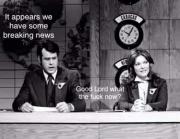In regards to the second video, im trying to reconcile aggressively driving the gun, vs just letting recoil happen. Yesterday I shot DoTW, and followed it up with some accuracy work and speed drills. Focusing on isolating the trigger finger, I shot a 1", 3 shot group at 25yds. Then when doing the Garcia dot drill, I kept driving rounds low. The fight between letting recoil happen, and wanting to drive the gun back on target is on going.




 Reply With Quote
Reply With Quote





